Beechey Island – August 18th, 2013
Franklin Expedition
Our ship proceeded west from Dundas Harbour towards Beechey Island. The plan of the day was to seek out polar bears in an area of sea ice to the west of Beechey Island. In 1845 Sir John Franklin left England in search of the Northwest Passage. The Northwest Passage is a sea route in the Arctic Ocean through the Canadian Arctic ArchipelagoA chain of many islands. that connects the Atlantic and the Pacific Ocean. Arctic pack ice has traditionally made this a difficult, long and often elusive crossing. Franklin and his men spent the first winter frozen into the sea ice at Beechey Island. Three of his men died and were buried there. By 1848 all 128 men on the expedition perished trying to get through the passage. As multi-year sea ice diminishes, this shipping lane is beginning to open up. In fact, next year Linblad Expeditions is planning a tour through the passage.

Polar Bears
We spent the day off the coast of Beechey Island moving slowly through the sea ice finding polar bears. Our ship was very careful to not disturb the bears; telephoto camera lenses and binoculars came in handy. We encountered a mother polar bear with her pair of second-year cubs. The cubs were always nearby, but when they sensed a male bear in the vicinity, they got even closer.
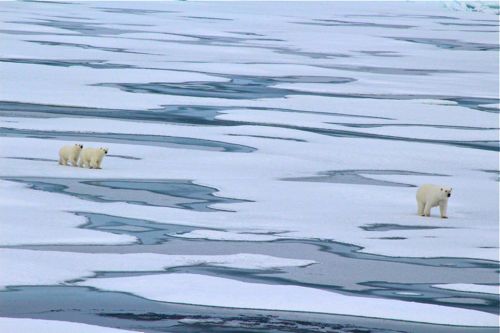
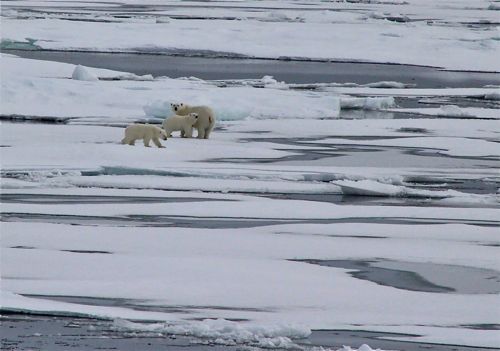
It didn’t matter how focused you were on taking photos, the birds in the area liked to photo bomb you. After awhile many of the guests on the boat started to seek out those bird photo bombs in their pictures. They were affectionately referred to as “Fulmar Photo Bombs,” since the culprit was usually a fulmar. Enjoy the glaucous gull and kittiwake photo bombs here.

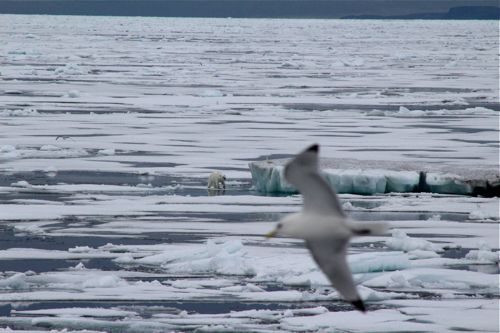
The bears we saw navigated around the patches of sea ice. We saw seals lounging on the ice, but when a bear that was about 1/4 mile away made a move towards the seal, it disappeared quickly into the water. Polar bears are more successful hunting with more ice. They are quite successful in pouncing on seals that come up in breathing holes situated in the ice. When there is more water than ice, it is more difficult. With all that said, we did see a male who had successfully killed a seal for his meal.

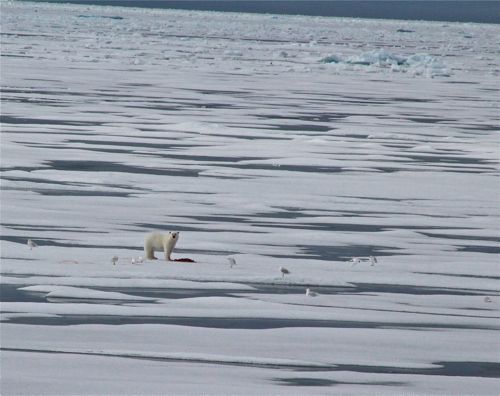

At dinner that evening, I sat with Sven Linblad and his family. Sven, president and founder of Linblad Expeditions, remarked about the number of polar bears we had seen on the trip. He was amazed that we had seen so many, and the majority of the bears we had seen looked healthy. We agreed that this phenomena was both and good and bad. It was good that the bears appeared healthy and that we saw many of them. It was also bad that we saw so many because they were highly concentrated in the small areas of sea ice that we found. It makes you wonder if this small area will be able to continue to sustain the population.
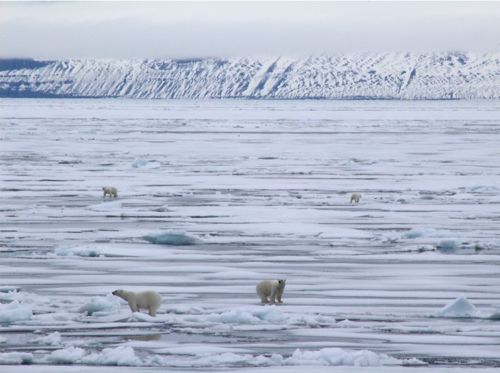
We saw two male bears approach each other. They seemed to check each other out, as two young males would on a city street. It’s almost as if one nodded his head and said, “Bro,” and the other responded likewise, then they continued on their paths.
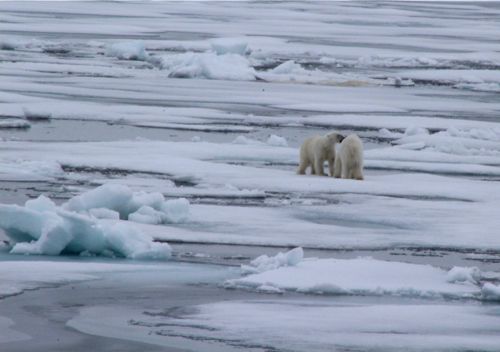
As we began to leave our day in the sea ice, we were able to spot another mother bear. This mom had a pair of first year cubs following her. It was a great end to a wonderful day in the ice.



Comments